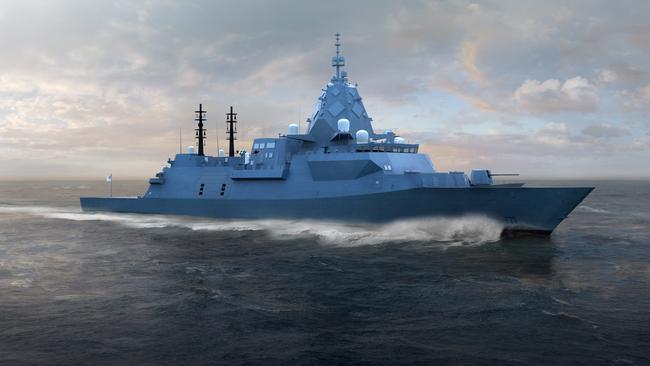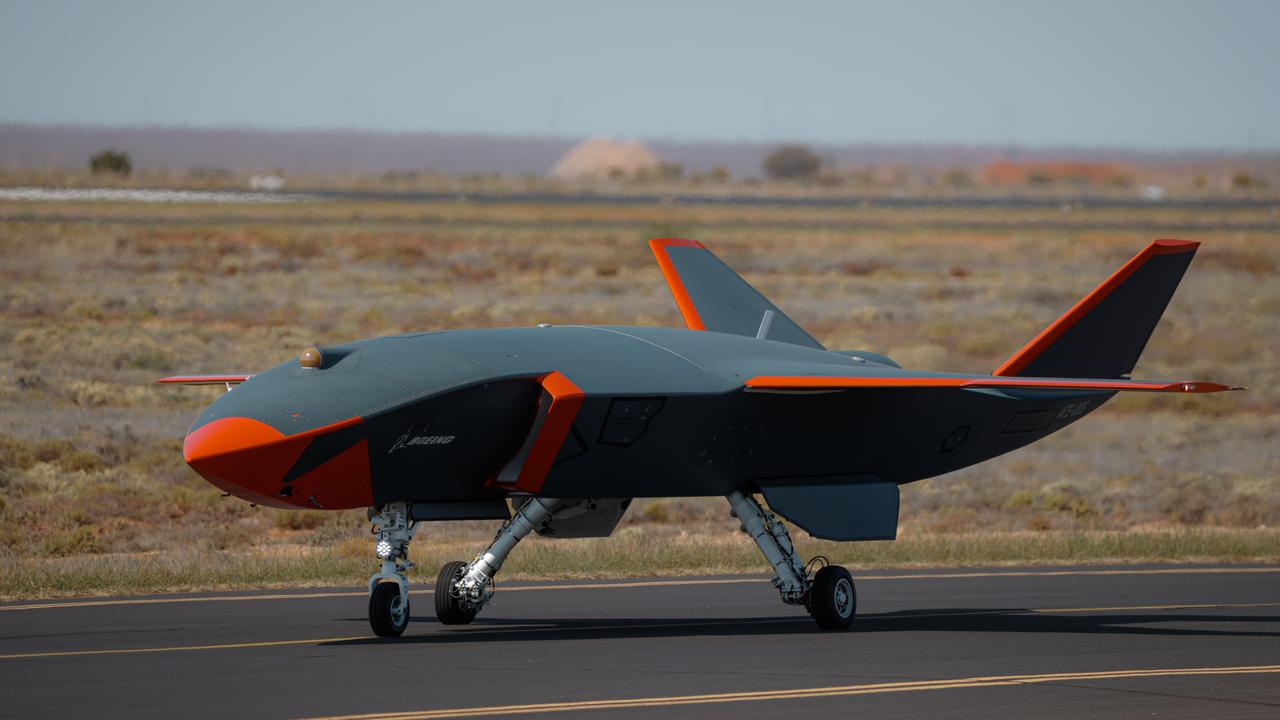Hunt is on to see how many new frigates we’ll get
How many Hunter-class frigates will be purchased? It is almost certain that it will be less than the original nine, but anything beyond that is pure speculation.

Probably the most important question the government’s response to a review into the RAN’s surface fleet will need to answer is: how many Hunter-class frigates will be purchased? It is almost certain that it will be less than the original nine, but anything beyond that is pure speculation.
The topic is polarising. Defenders of the project – mainly the government and prime contractor BAE Systems – argue that in the fullness of time the 8800-tonne ships will be among the most capable anti-submarine warfare (ASW) assets in the world.
Detractors point out that the project appears to be two years late; the design has increased alarmingly in weight – and with only 32 Mk 41 vertical launch system (VLS) cells they are under-armed to take on a formidable foe such as the Chinese Navy.

The government’s rationale for a separate study by retired USN Admiral William Halirides – which was delivered in September – is that Australia’s decision to acquire nuclear-powered submarines means that the balance of the anti-submarine warfare (ASW) parts of the surface fleet might need to be altered.
Leaving out the fact that only one submarine has actually sunk another one – and that was in February 1945 when a British vessel successfully targeted a U-Boot off the coast of Norway – in theory they are indeed powerful ASW assets.
It has been suggested that last year’s DSR thought that the entire Hunter project be scrapped but the government was scared to do anything that drastic and has instead passed the buck.
The fact that ministers Richard Marles and Pat Conroy insist on sitting on their response until January, when everyone is at the beach or watching the cricket, might be an indication that something very nasty is being planned.
To cancel the contract now would be a drastic move, especially since project expenditure is already more than $3bn. This is out of a total of $6.16bn for the current design and development phase before even a single ship is delivered – an unconscionably large number that seems well outside the usual range for start-up costs for naval shipbuilding contracts. BAE Systems would probably be entitled to sue for the balance.
The reputation of the project has been further battered recently by revelations that the Department of Defence omitted a vital part of the evaluation process – a value-for-money assessment of the bid. This is a unique lapse for any contract, let alone one of this scale.
Also, some critical documentation explaining how BAE Systems was selected ahead of two other bidders offering far more mature designs has mysteriously gone missing.
It was always anticipated that the Australian-specific changes to the parent Type 26 UK design would add about 500 tonnes to the ship, mainly because of a different radar suite made by Canberra-based CEA and a US Aegis combat management system.
However, it now appears to be about double that, though both the Department and the builder are coy about the exact amount.
Appearing before Senate Estimates and other parliamentary inquiries, neither officials nor BAE Systems have covered themselves in glory, saying that the weight increase has no impact on the performance of the ship, which is logically impossible.
For reasons that are unclear, the design hasn’t been lengthened to adjust for these changes, but the hull has been made slightly fatter to increase internal volume without altering its overall dimensions.
Similarly, the fact that the Type 26 only has 32 VLS cells cannot be wished away. This compares with 48 for the current Hobart-class Air Warfare Destroyers from Spanish builder Navantia, 96 for a USN Arleigh Burke and a whopping 128 for the latest Aegis-based South Korean surface combatant, the Sejong The Great class.
While some canister-launched missiles will be added to the future Hunters there is a strict limit to how many of these can be carried.
Putting all of this together, it is highly likely the government will cut back on the order and contract for between three and six of them.
A huge problem is that starting work on replacement ships of any other design will take several years before any hulls are in the water.
The three AWDs start a major refit in 2026 that is expected to take a minimum of 24 months for each, so the surface combat fleet will be reduced to two of them plus a nominal eight old and relatively small 3000 tonne Anzacs with 8 VLS cells apiece.
The company has gone into some sort of funk and is no longer enthusiastic about media engagement, which is often – but not always – a sign that they don’t have anything positive to say about the project.
Mind you, this could be at the direction of the Department, which often incorrectly calculates that forcing everyone to bury their heads in the sand means their own actions will avoid serious scrutiny.


